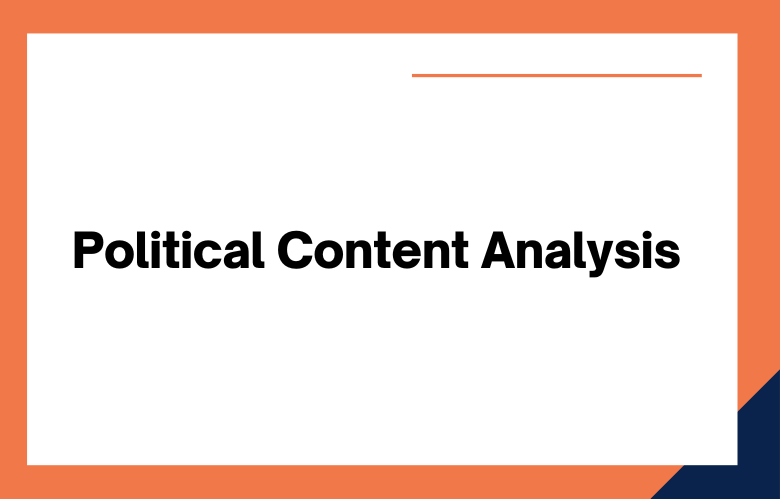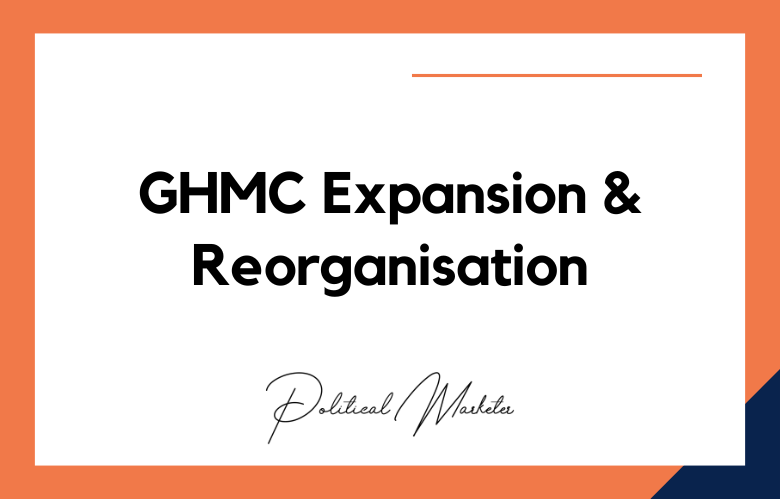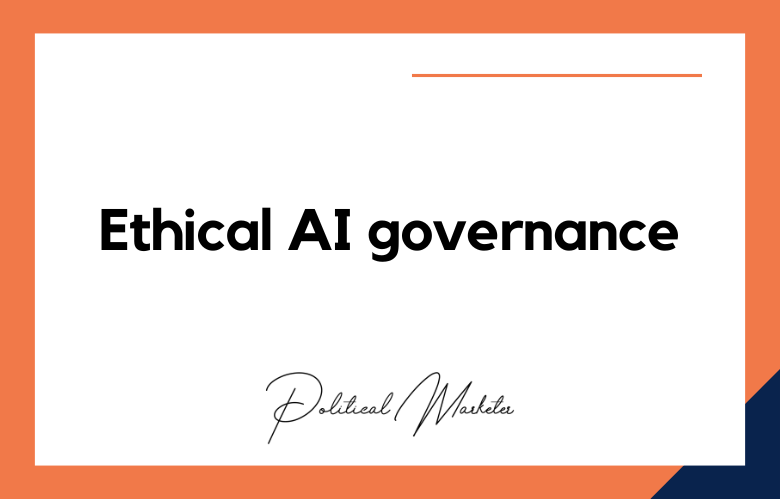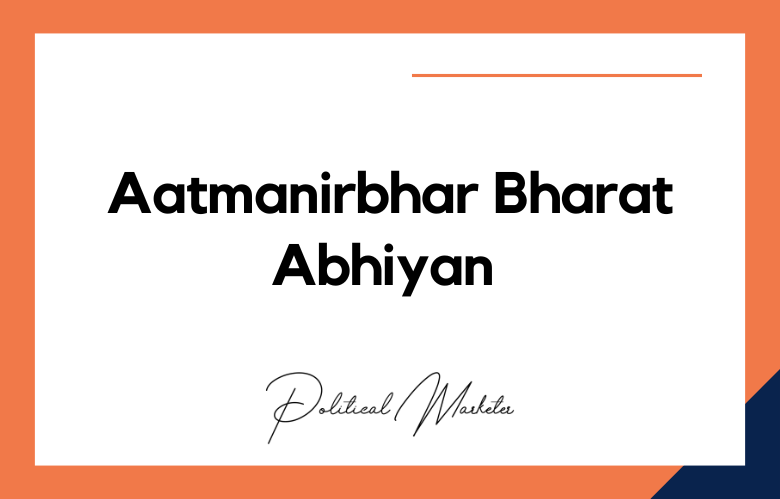You may have heard the term “political content audit” thrown around lately, but what does it mean? And more importantly, how can you do one yourself?
Political Content Analysis: We’ll break down everything you need about political content audits and provide instructions on how to carry out your own. Whether you’re a business owner looking to ensure your social media is free of any partisan bias or a concerned citizen trying to understand how biased the media is, this guide is for you!
Does the political content online make you feel overwhelmed? You’re not alone! Knowing where to start when sorting through all the noise can be challenging.
Today, we’ll walk you through how to do a political content audit. It is a great way to get an overview of what’s being discussed online and help you identify trends or themes in the political conversation.
What is Political Content Analysis?
It is a technique used to examine the content of political communications. It can do it through media, such as election speeches, debates, news coverage, etc. By analyzing these communications’ content, we can better understand the messages politicians are trying to communicate to the public.
Political content analysis is a method of analyzing political messages to understand their influence on individuals and society.
This method can examine political communication, including speeches, news articles, campaign materials, etc.
By understanding how political messages can be created and received, we can learn more about their impact on our world.
It is the systematic study of Political communication, typically conducted by closely reading texts such as speeches, heard interviews, articles, and Policy papers.
This type of analysis deconstructs how Americans communicate about politics in hopes of understanding the effects of this on reaching political objectives.
It can be historical, exploring how past political content has changed or remained similar.
Conducting a content analysis requires breaking down the texts to understand what messages are being communicated and how those messages are being received.
Political content analysis is a method of analyzing the political landscape. By examining the content of political communication, analysts can uncover trends and patterns that otherwise would be difficult to discern. This technique can use to study everything from political ads to campaign speeches.
In essence, Political content analysis is a way of looking at the big picture by deconstructing the smaller pieces.
It critically analyzes and interprets political communication to understand the ops and underlying meanings. Political content analysis can apply to written, quantifiable, non-written, qualitative sources such as multimedia or New media.
It is a technique used to examine various forms of political communication, such as speeches, news articles, and campaign materials. This type of analysis can be used to understand the overall tone and message of a particular piece of content, as well as the specific goals or objectives it may aim to achieve.
This analysis examines various types of political content, such as speeches, articles, and debates. By looking at the content itself and the context it creates, analysts can learn more about the impact of political messages.
What is a Political Content Audit?
A Political Content Audit examines all the content on a website to ensure that it is accurate and up-to-date. It can be tedious and time-consuming, but it is essential to maintaining a website’s credibility.
A political content audit critically analyzes all political content a government entity produces. This content can add but is not limited to speeches, policy papers, program evaluation reports, and performance data.
A Political Content Audit is an analysis of the content on a website to ensure that it is accurate and up-to-date. It is a vital part of any political campaign, as it can help identify any potential problems with the website content.
It is a way to determine the quality and accuracy of the content on a political website. By looking at the site’s organization, design, and scope, you can see how well it communicates its message.
How to Do a Political Content Audit
To do a political content audit, follow these steps:
Collect all of your political content in one place. It can do by physically gathering your print materials or saving all your digital content in one place.
Once you have everything together, take an inventory of what you have. What topics are covered? Are there any recurring themes?
Next, evaluate the quality of your content. Is it accurate and up-to-date? Does it reflect your organization’s values?
Once you’ve assessed the quality of your content, determine where there may be gaps. What topics are you missing? Are there any areas that require more attention?
Performing a Political Content Audit doesn’t have to be complicated.
You can quickly complete your audit by breaking it down into smaller tasks.
To start, take an inventory of all your political content.
It includes anything from blog posts and articles to emails and social media posts.
Once you have a list of all your content, it’s time to start evaluating.
Questions for yourself are: is this content accurate? Is it fair? Does it reflect my political party’s values?
You may find that some of your content Needs updating, while other pieces can be left as is.
With a little more effort, you can ensure all your political content.
- You must analyze your site’s content for a political content audit.
- This includes everything from blog posts and articles to images and videos.
- When looking at your content, ask whether it is accurate and up-to-date.
- Scan for any discriminatory language or misinformation.
- Verify that your facts and figures are correct.
- After you’ve completed your audit, make sure to update any outdated information and remove any inaccurate content.
Ways to Do a Political Content Audit
- Define what a content audit is and why it’s important
- Research the types of audits that are available
- Choose the correct type of audit for your organization
- Gather all of your content and put it into one place
- Evaluate your content against your goals and objectives
- Develop a plan to improve or replace any low-quality content
- Implement your plan and track results
- Define what a content audit is and the goals you hope to achieve
- Gather all of your content, including published posts, drafts, and unpublished content
- Generate a spreadsheet with all of your data
- Analyze your tone of voice throughout your content
- Assess how well you are achieving your goals
- Make changes based on what you’ve learned
- Decide what you want your content to achieve
- Gather all of your content and put it in one place
- Sort the content into categories
- Analyze each category for tone, accuracy, and relevance
- Make changes to the content as needed
- Create a style guide for your team
- Train your team on how to use the style guide
- Audit your content again regularly
- Look at the different types of political content you produce
- Evaluate the tone of your content
- Analyze the structure and style of your content
- Assess how well your content engages readers
- Check for factual errors in your content
- Identify areas for improvement
- Define what a content audit is and why it’s essential.
- Outline the steps necessary to complete a content audit.
- Discuss the different types of audits that can do.
- Describe how to analyze your data and make decisions based on your findings.
Conclusion
As we’ve seen, a political content audit can give insights into how your brand is perceived and what information resonates with your audience. It also provides an overview of the competition and lets you track how your messaging changes.
Contact us if you want help conducting a political content analysis or need advice on improving your strategy. We offer to consult services to help you create a winning plan for reaching your target voters.
Political Content Analysis 101: How to Do a Political Content Audit – FAQs
What Is Political Content Analysis?
Political content analysis is the systematic study of political messages, speeches, media coverage, and campaign materials to identify patterns, themes, and narratives.
Why Is Content Analysis Important in Political Campaigns?
It helps campaigns understand voter sentiment, media framing, opposition strategies, and the effectiveness of their messaging.
What Types of Political Content Can Be Analyzed?
Speeches, social media posts, manifestos, advertisements, news coverage, interviews, debates, and press releases can all be analyzed.
How Does Political Content Analysis Support Voter Targeting?
It reveals the language, tone, and issues that resonate with different demographics, enabling tailored messaging and outreach.
What Are the Methods Used in Political Content Analysis?
Quantitative methods like word frequency and sentiment scoring, and qualitative methods like theme detection and discourse analysis are commonly used.
Can Content Analysis Detect Political Bias in Media?
Yes, by evaluating word choice, framing, and source diversity, it can expose partisan leanings or slants in media content.
How Does Political Content Analysis Influence Narrative Control?
By identifying which messages gain traction, campaigns can refine or counter narratives to stay ahead of the public discourse.
What Is the Role of AI in Political Content Analysis?
AI enables large-scale data mining, real-time sentiment analysis, topic clustering, and pattern detection across platforms.
How Can Political Content Analysis Be Used in Crisis Management?
It helps leaders track media response, detect misinformation, and adjust communication strategies during controversies or emergencies.
What Is the Difference Between Political Content Analysis and Media Monitoring?
Media monitoring tracks mentions and coverage, while content analysis goes deeper to interpret meaning, sentiment, and strategic messaging.
How Does Content Analysis Enhance Political Storytelling?
It identifies emotional triggers and narrative arcs that can be woven into compelling campaign messages and speeches.
Can Political Content Analysis Measure Campaign Performance?
Yes, it evaluates whether key messages are being echoed, how the media is portraying the candidate, and what issues are dominating coverage.
Is Political Content Analysis Useful for Opposition Research?
Absolutely, it helps in dissecting competitor messaging, identifying inconsistencies, and crafting effective counter-narratives.
What Is the Role of Sentiment Analysis in Political Content Analysis?
Sentiment analysis assesses whether political content is perceived positively, negatively, or neutrally by audiences.
Can Content Analysis Help in Understanding Voter Concerns?
Yes, it highlights frequently discussed issues and keywords that reveal what matters most to voters in different regions.
How Does Political Content Analysis Contribute to Media Strategy?
It informs where to place ads, what tone to use, and which messages are likely to be picked up or amplified by the press.
Are There Ethical Concerns in Political Content Analysis?
Yes, especially around data privacy, manipulation of narratives, and using insights to micro-target voters without transparency.
How Can Political Parties Use Content Analysis Post-Election?
They can assess which messages worked, what media strategies failed, and how public discourse evolved during the campaign.
What Are Some Tools Used for Political Content Analysis?
Common tools include NLP platforms, sentiment analyzers, media databases, and social listening software.
Can Content Analysis Be Applied to Regional Language Political Campaigns?
Yes, multilingual NLP and localized analysis help understand regional sentiments and issues in native languages.
One way to get in touch is by filling out our online form on this site or give us a call at
+91 9848321284. Let’s work together today!











